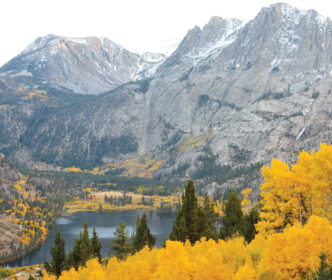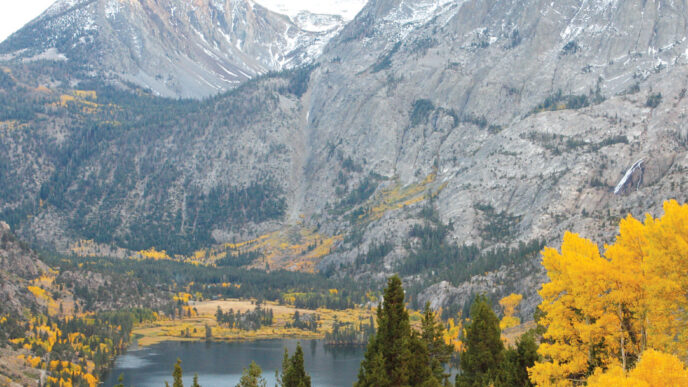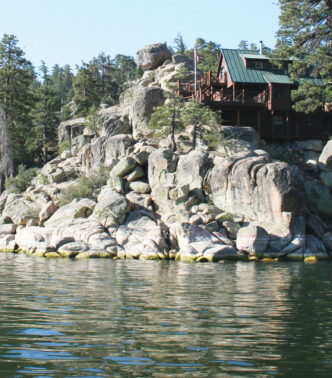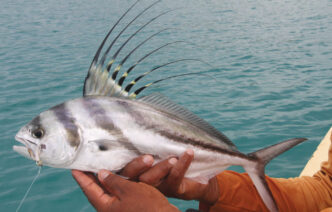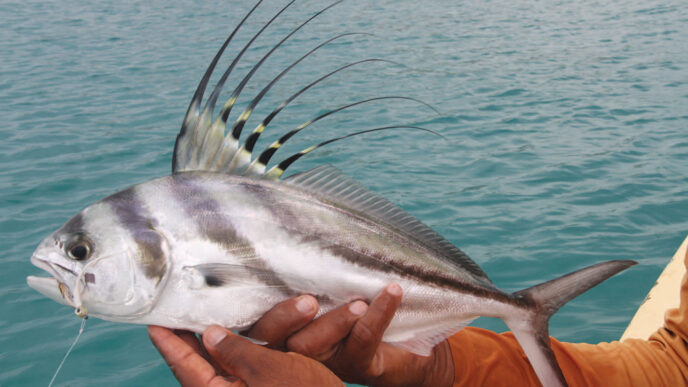Russell Chatham’s memoir in the October 2012 issue of California Fly Fisher about his youthful adventures in coastal Marin County sparked a few nostalgic memories of my own. When I returned to California from military duty in Southeast Asia, my wife and I chose to settle in the East Bay community of Pleasanton. After I hung out my shingle as a dentist there, I was fortunate to be welcomed by older mentor dentists who also were advanced fly fishers.
Pleasanton was a good place to have landed. In addition to opportunities nearby to hunt and fish, there was a fly-fishing club where passions that I had put on the back burner because of graduate school and military service were rekindled. Jim Houle and Don Ainsworth tutored me in steelhead, shad, and striper fishing with flies. Russ Kruger, an angling partner of famous fly tyer Jack Horner, creator of the Horner’s Deer Hair Fly, taught me the intricacies of tying Humpies and Muddler Minnows. Another deer hair expert, Carroll Kennedy, who hailed from Texas, instructed me in tying and fishing deer hair bass bugs and poppers.
These anglers were not fly-fishing purists. We traveled each year in September and October to the Sonoma coast for an attack on inshore fish stocks with conventional tackle. Pacific coast rockfish (genus Sebastodes, often mistakenly called “snappers”), greenlings, ling cod, sand dabs, California halibut, and an occasional late salmon were our targets. An exceptional El Niño even brought bonitos.
The Sonoma coast in early autumn usually experienced a respite from the incessant westerly winds that blow during summer. When the seas lay down, we were able to launch 14-foot aluminum skiffs at Timber Cove using an infamous overwater cable and sling that was operated by Dave Verona. Dave was a gruff-voiced, red-haired resort employee who tolerated little indecision or lollygagging from his customers when they lined up at dawn for an adventurous launch.
Our boats were hitched to a tractor with front and rear hitch balls for a ride down a steep, sandy access road through a gap in the cliff to a black-pebbled beach at the back of Timber Cove. Two webbed straps that hung from an iron cage were worked under the bow and the stern. The cage hung from a rusted cable array that ran from deadman anchors on the north and south cliffs that circled the small bay. I remember looking up and wondering if Cal OSHA had ever inspected the rig.
The really exciting part started when your boat, with gear and passengers aboard, was lifted up off its trailer and swung out beyond the shore break. You quickly ran a mental check of your gear list, but then shrugged your shoulders as well, because you knew it was too late if you had forgotten anything.
We tolerated the harrowing launch process, perilous seas, and Dave’s crap because we got access to a mesmerizing coastal area that was rich in sea life. It had not yet been impacted by heavy inshore long-line commercial fishing and disregard for angling regulations by a wave of new immigrants. As the rig was lowered onto the cold water, we would relax a little. Instantly, you felt the rise-and-fall surge of Pacific swells. We cleared the straps and fired up the engine as soon as the water intake was submerged. It was wise to turn the bow quickly into the incoming waves and best to wait to try a retrieve on the tide change six hours later.
Our purpose, aside from adventure, was to catch and very soon afterward eat the abundant, delicious inshore fish. One game plan involved first running south to locate patches of smooth, sandy bottom that held immense schools of sand dabs. Frozen squid had to be thawed in seawater and cut on a bait board into three-quarter-inch-wide, three-inch-long strips with a V shape on one end. It took only a few rolling swells to make you wish that you had prepared the squid on shore instead of on a stinking bait board in a bobbing boat. We impaled these bait strips on the business end of a surf rig string of four to six size 6 hooks. There was a swivel between the sand dab hook setup and a snap swivel with weight attached at the other end.
After a brief chumming session, we lowered our rigs to the bottom and did a slow up-and-down jig in which the baits were raised a foot or so off the bottom and then lowered again. A deft hand would feel the rig “load up,” and we’d laboriously reel it in, yielding two to six sand dabs, which went into a wire mesh crappie basket. When it was near capacity, we would run north and search for reefs where our dabs became live bait for ling cod and larger rockfish. If we liked our first drift there, we threw out empty Clorox bottles wound with rayon line and attached to sinkers to mark our drift.
We had lots of gear crammed into that small skiff. When you started catching fish, elbow room was at a premium. I eventually graduated to a 16-foot 10-inch dory-bow aluminum boat that had a graph recorder, console, and more storage room. It maxed out the launch sling. This bigger boat allowed the luxury of more rods. One was a heavy-shafted, solid-glass black bass casting rod. I started experimenting with small hair jigs as my bottom weight and two droppers with the V-slit squid strip.
This setup proved very effective and gave infinitely more sport. The edge of kelp beds as well as underwater rock pinnacles held rockfish that showed as pyramid-shaped columns on our recorder. Different species stratified in the column. The jig rig worked best in attracting “blacks” and “blues.” In those days these fish, which resemble freshwater black bass, consistently attained mature weights of three to five pounds. A jigging technique usually used for black bass worked quite well. One trip saw the demise of a solid glass Conlon rod when I set up on three large fish simultaneously. My rod shattered as the fish surged toward the bottom, all pulling together. I was able to land the fish, but the rod got the deep six.
Rockfish on the Fly
At home, preparing for a trip to the coast, I wondered if these fish could be caught on a fly rod. I knew from articles that surfperch would take flies, but could find nothing on using flies for rockfish. My boat was rigged for striper fishing, so I lined several 8-weight fly rods and threw in a box of striper flies. One rod had a homemade lead-core shooting line and the other a slower sink rate steelhead taper.
We were fortunate on that trip that we encountered a very low ceiling of fog, and the Pacific was dead calm. Several hundred yards out of Timber Cove, we started seeing bizarre dimples and swirls on the surface that reminded us of some kind of rise form. I put the outboard in neutral and picked up a fly rod that had a short leader with a red-and-white Whistler. My first cast produced a mad four-pound “blue.” My partner grabbed the rod and took another beautiful fish. The graph recorder showed a layered pyramid going down 50 feet. If we counted the line and fly down to 10-foot and 20-foot depths, we were into “canaries” and then “olives” that ran five, six, and sometimes seven pounds. Large rockfish like these yield the best fillets, because the ratio of usable meat to body weight is better, creating less waste. Gradually, the ceiling rose and sunlight broke through. The surface swirls disappeared, but as we idled around in circles, the recorder found more vertical columns of suspended fish. We experimented with countdowns, retrieves, and hook sets. Most takes came on the fall. A blind set on a fluttering fly often connected. We never found a better fly than that red-and-white Whistler, though on dark days, Ed Given’s Barred ’N Black ran a close second.
After that morning, we always carried fly rods. The fish were strong and gave us good sport. The fly rods added a new dimension to our foods runs. One year we even took several coho salmon. A large coho cartwheeled and smoked a Pflueger 1495 Medalist.
Sonoma Coast Fish Fries
Part of the excitement of a trip to the coast was the anticipation of a fish fry and potluck supper in the nearby county park where we camped. We were on the water from dawn to around one o’clock in the afternoon, unless the wind came up and we were driven in. A safe return to port always brought a good feeling that superseded fatigue and windburn. Then we faced the task of cleaning our fish. There were rickety wooden fish-cleaning tables just above the high-tide line. The chore took an hour or longer. Most of us carried sharpened fillet knives on our belts, and there was a sharpening steel on the table. We flung entrails and carcasses into the surf line, where sea lions and seals barked and fearless diving seagulls darted in close for choice morsels. Birds and mammals staged tugs-of-war for particularly good heads and backbones. Nothing was wasted. It was a wild, earthy scene.
When our fillets were washed and packed in Zip-loc bags, the boats had to be pulled up the hill. We washed them down at the diver’s station and then headed to our campground. By the time these chores were finished, cat naps taken, and we had cleaned ourselves and our gear, it was time for a fish fry.
A potluck dinner always complemented our fresh fish. No Raley’s or Safeway deli food was allowed. The recipes had to be a family’s best. At first, we used large cast-iron Dutch ovens for frying the fish, but the word spread of our success and the fun we had afterward, and as our numbers grew, the club purchased a deep-kettle, propane-fired fish fryer with its own removable basket. It was the kind used in the Deep South for catfish and crappie fries. Everybody contributed large cubes of fish taken from the thicker fillets. We dipped the fish chunks in a beer batter and dropped them in small batches into the bubbling oil to come out a sizzling golden-brown within a few minutes. Hungry campers gathered in line with wine glasses in hand to get same day-fresh snapper, ling cod, halibut, and greenling. The day’s activity and the sounds and salty smells of the sea had worked up our appetites.
It was on such an occasion that we learned that our ling cod bait, sand dabs, are a culinary delight in their own right. On another trip with a smaller group, we saved our largest sand dabs for dinner after packing our fillets in ice. We were sipping cold beers in the camp’s late-afternoon sun and talking about how good the dabs would be. An attractive young woman in an adjacent camp caught a bit of our conversation. She came over and asked, “I heard you guys talking about sand dabs. Would you be willing to trade some for abalone?” Three grown men stumbled over themselves getting those fish out of the cooler. Our new friend suggested that we combine our camps for dinner . . . crisp white wine, sautéed abalone fritters, fresh fried rockfish, a tasty salad, the roar of a pounding sea, and wisps of fog rolling in.
It doesn’t get much better.
Buying and Frying
We can’t always go to the ocean and eat our catch the same day, the way we did back then, but freshness is one of the keys for fish lovers. For fish you didn’t catch yourself, a good fishmonger is worth his or her weight in gold. Living a long way from the sea and practicing catch-and-release angling, I find myself buying fish often. Years ago, when I was interviewed by a Contra Costa Times reporter on how to select fish at a market, the reporter wanted to know where I bought my fish. My answer was that sometimes I had to go to two or three stores to find good product, and often I didn’t buy. Where I now live, in Gold Rush country, Mike Duffy gets salmon up here the day his boats come in. On occasion he surprises me with sand dabs that were an incidental part of the catch. Aside from Mike, I often visit Costco or Asian food markets, even if the latter are more than an hour’s drive away. Why? The Asian markets have a clientele that demands freshness. Costco turns its product over rapidly. It doesn’t sit for days in the lockers.
When purchasing fish, I look for clear eyes, firm flesh, and blood-bright gills. I want moist skin, and if there is a fishy or ammonialike odor, I reject the fish. Bring the fish up to your nose and sniff, the way they do in France.
Sautéing fish — cooking it one side at a time with a small amount of fat — is one of my favorite preparation methods. Dusting with flour dries the fish’s surface so the outer flesh layer can brown and caramelize while sealing in the juices. For delicate-flavored fish such as petrale sole, I toss a rinsed and gently patted dry fillet in a paper bag containing flour seasoned with white pepper and sea salt. With stronger fish such catfish, tilapia, or California halibut, I season the flour with a Cajun or jerk spice. Make your own with garlic salt, paprika, cayenne, and black pepper. Costco tilapia fillets that come frozen in single-portion bags make great fish tacos. They also transport well for a first night in camp. Sand dabs and catfish have a slightly gelatinous component in their flesh. They need to be cooked more than delicate fish such as sole or rockfish.
Some cooks like to sauté using an egg batter or wash. Dredge your fillet in flour, then in beaten egg, then in more flour. But I find that the egg detracts from the taste of top-quality fish.
A modern nonstick skillet makes cooking almost foolproof when using small amounts of oil. Swiss Diamond manufactures a nonstick pan that dissipates heat evenly. I can sauté a number of fillets in a 12-inch pan, never using more than medium on the burner setting.
Always use a little oil, or clarified butter, even if the pan’s directions say it isn’t necessary. It helps protect your pan’s surface and transfers heat better. I use peanut oil, because it has a high flash point and doesn’t break down into bitter compounds. Olive oil with garlic slices and a pat of butter is best for sand dabs. Olive oil has a low flash point and will turn bitter if high heat is used, so again, cook on a medium flame. Some use lard or even duck fat for special flavors.
Deep frying is another alternative. Largemouth and smallmouth bass from sources not contaminated by mercury are among our favorite fish for deep frying. I use a Chinese wok to deep fry same-day caught fillets that have been dipped in a chilled, thinned tempura batter. The curved bottom of the wok allows you to fry with less oil. Because of the heat applied, I prefer peanut or canola oil. Like rockfish, bigger bass give a better flesh-to-carcass ratio. Throw the small ones back. The really big ones should be released, too. They produce lots of babies, are not as tasty, and have more contaminants.
For deep frying without a wok, use a large pan or kettle with lots of oil (three inches, minimum, but never more than half the pot’s wall height). It allows you to keep the oil’s temperature constant — around 375 degrees, as determined with a frying thermometer. Don’t add too many pieces at once, or the oil temperature will drop, and you will have oily, mushy fish.
Measure the thickness of the fish. The rule of 10 minutes of cooking to the vertical inch is a good starting point for both sautéing and frying. My Texas friend, Carroll Kennedy, fried his fish at lakeside. He used custom-made, square, high-sided cast-iron skillets for frying bass fillets minutes after they came from the lake on his dad’s ranch. He cooked them on a mesquite-fired wood stove. Carroll’s directions for deep frying are “slip the battered or dusted fillets into bubbling lard. Turn after three minutes. They will sink and then rise again after a few minutes. That’s when to take the golden fish pieces out of the oil.” Put them on a shallow rack to drain, not on paper towels.
Here are two recipes for batter that makes great deep-fried fish.
Light Tempura Batter
2 cups all-purpose flour
1 teaspoon baking soda
1 cup cold water, plus a few ice cubes
Mix the flour and baking soda in a bowl. Whisk in the water and stir until it is free of lumps. Add a few ice cubes, then let the batter sit for a minute or two. Often, for convenience or when camping, I use a commercial tempura batter, but I thin it with a bit more water than called for.
The Livermore Fly Fishermen’s Beer Batter
Bisquick
Chilled beer
Spice mix: Garlic salt, paprika, and cayenne pepper (in moderation).
Whisk the Bisquick with the spice mix into chilled beer. Commercial spice blends work quite well. I love Luzianne Cajun Seasoning. It’s available in most grocery stores. Experiment with batter thickness. We like thinner batters. The batter should seal the moisture into the fish, give a good texture, but not dominate the flavor of good-quality fish. Many restaurants apply overly thick batter to cover up lower-quality fish.









